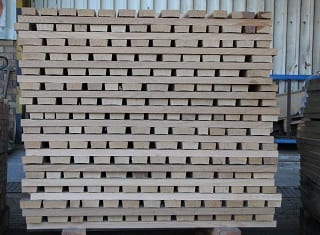
PHOTO 1. Staves which can be used in barrels or in tanks.
Alternative oak wood products have been used in cellars since the 1980’s. The cost saving in comparison with new wood barrels is the main reason for its use. If barrels and alternative wood products are, however, objectively compared, the common use of wood as raw material for both is the only similarity between the two. Each has specific advantages or disadvantages and the cost difference should not be the only factor influencing the decision-making about them. Apart from oak wood alternatives, other wood types, like acacia and even cherry wood, have recently been evaluated to extend the wood aroma profile of wines more.
A survey about the use of oak wood, whether as barrels or as the different oak wood alternatives, is annually held in California. Although the use of micro oxygenation (MOX) is sometimes included in the survey, this procedure is not necessarily used together with all oak wood treatments. Over recent years several trends have appeared which were confirmed by the survey. The trends can be summarised as follows:
● The use of oak wooden barrels has not disappeared.
● The retail price of wines where no barrel maturation was applied, increased gradually. When the survey was initiated a couple of years ago, it was $6.99 – 8.99, but it has now increased to $14.00 – 24.99.
● Alternative oak wood producers are used increasingly more.
● The viewpoint regarding alternative oak wood products differs between small and large cellars.
● Winemakers learn more about the correct use of different alternative oak wood products for different wines. There is actually not a single correct choice, because all the alternatives are feasible.
Although more knowledge is required for the use of oak barrels than for alternative products, the use of barrels will not disappear. This is in spite of the fact that barrels are expensive and the practical handling thereof requires much manual labour. More than half of the survey’s participants still use barrels, although most of them are small cellars, which in some cases use no alternative oak wood products. This is expected, because barrels are more suitable for smaller volumes and MOX is for example not required. Large cellars use increasingly more alternative oak wood products for their cheaper products. The potential disadvantage of barrels and advantages for the use of alternative oak wood products can be ignored if cellars have less than 1 000 barrels. Cellars with a barrel inventory of 1 000 and more must, however, consider the problems associated with the maturation space, stacking, emptying, filling and topping of barrels, before a decision regarding the use of oak wood is taken. This does not necessarily imply that large cellars will not use wooden barrels. If the price points at which their wines are sold, are high enough, above-mentioned problems can be overcome. The well-known Kendall-Jackson is a typical example of such a cellar.
The fact that more alternative oak wood products are used, is confirmed by their providers, as well as the medium-sized and large cellars, participating in the survey. More than half of them use tank staves and more than three-quarters use oak wood chips and blocks. The viewpoint of small and large cellars regarding the use of oak wood, differs considerably. While more than half of the small cellars do not use alternative oak wood products, approximately 90% of medium and large cellars do use them. Wine must retail at $24.99 per bottle, before the cost of barrel maturation is recovered.
Although the filling and topping of barrels do not require technical competency, the regular opening and closing can have negative quality consequences; contrary to the use of tank staves and MOX which are more refined.
The growth of the use of alternative oak wood products over the last 30 years has been phenomenal. Intensive research has made it possible for cellars to use products according to aroma profiles, like vanillin, smokiness, creamy and coconut. Further research is still required to use different oak wood barrels and alternative oak wood products to the best advantage of wine (Philips, 2018).

PHOTO 2. Wood blocks and powder.
Reference
Philips, C., 2018. Considering the (oak) alternatives. Wine Business Monthly, April 2018: 35 – 41.













